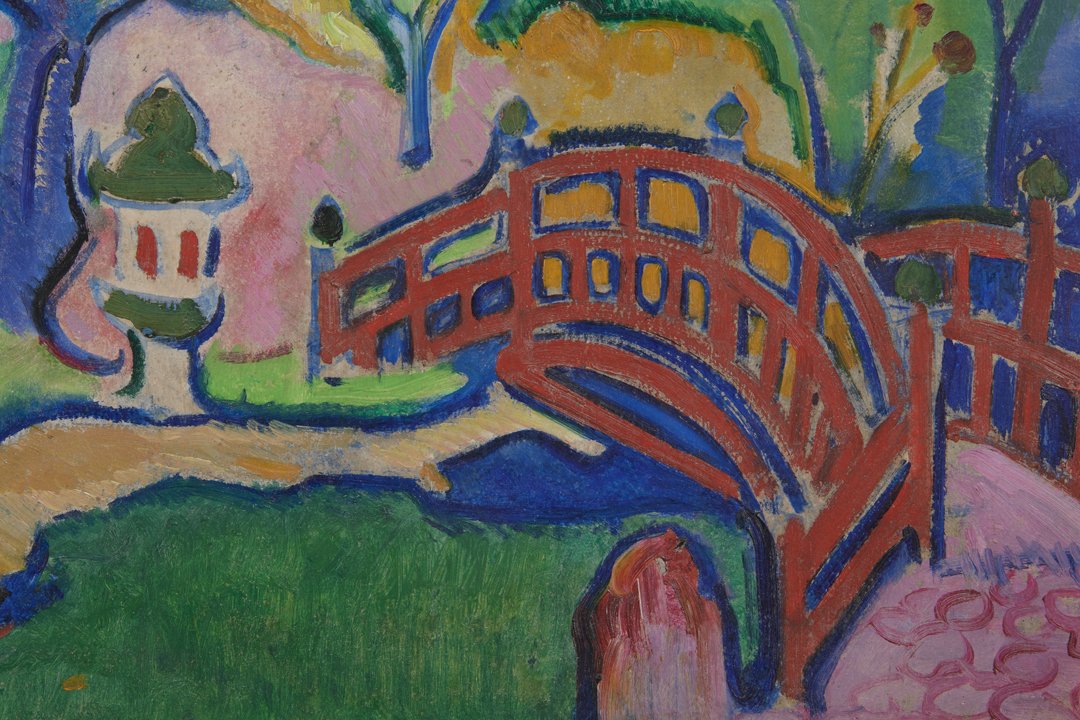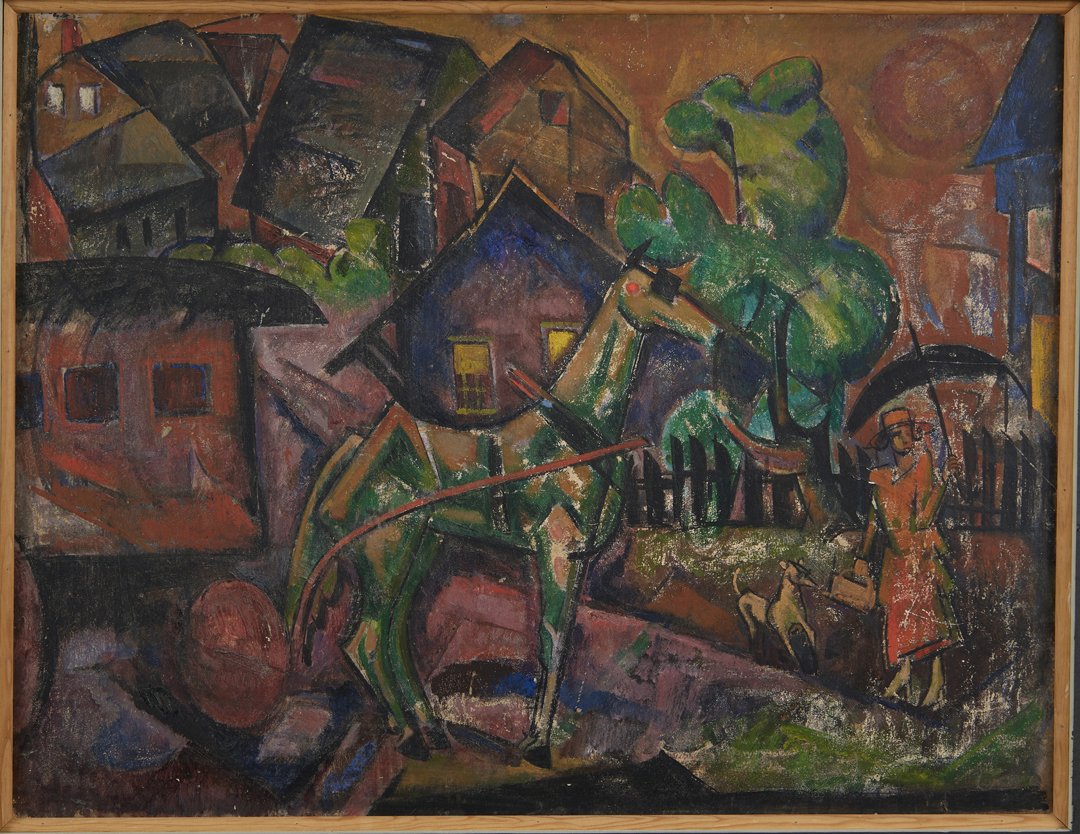Artist: William Sommer (American, 1867–1949)
Medium: Oil on canvas
Signature: Signed lower middle
Dimensions:
24.25 x 31.75 inches
30.75 x 38.5 inches, framed
Description:
William Sommer’s Romance with the Rocky River, 1912-1914
“The Rocky River Valley is a breathtakingly beautiful area just a mile from William Sommer’s Lakewood home on the West Side of Cleveland. In 1910, a concrete bridge—the largest ever built at that time—was completed, connecting Lakewood to the town of Rocky River on the opposite shore. On the river’s banks, Anna Schlather Hobson, an accomplished painter, had a large, ninety-seven-acre estate. Often she would have William Sommer and August Biehle over to enjoy an afternoon of plein air painting. The estate included a wondrous Japanese garden that overlooked the river, with fine views of the bridge and the neighboring watchtower.
Sommer’s paintings of the Hobson estate show a progressive assimilation of modern ideas. Qualities of natural light give way to bright primary colors and vigorous brushwork. Elements of modernism are evident in the use of non-naturalistic color and the simplification of forms. In The Japanese Bridge, floating images and explosive bursts of color create an overwhelming sensation. Unlike the other paintings, The Japanese Bridge does not
represent a distinct scene, but a fusion of impressions. Sommer wrote in his journal: “Art is the emanation of our spiritual, inward world, nature just starts us off.””12
Anna Schlather Hobson was the daughter of Leonard and Anna Schlather. “Leonard Schlather, owner-operator of the Schlather Brewing Company in Cleveland, Ohio, purchased over 100 acres on both sides of Wooster Road (then Mastick Road) as a site for his new residence in Rocky River, part of which bordered on the Rocky River valley. He built a fine home on the easterly parcel. Schlather was of German extraction, hence his interest in breweries.
On the Schlather estate they raised timothy hay for their main crop. This crop was taken across the Rocky River wooden and iron bridges by horse and wagon to the hay market in Cleveland (on Ontario Avenue) where it sometimes was sold by the wagon load and then delivered to the purchaser at his premises; sometimes the hay was sold in bundles at the market. The hay was purchased by business people using horses for deliveries, etc. and for private use for those who had horses for their personal transportation. The Oakwood Market, later known as Primett’s Market, had a barn and stable for their business use in making deliveries.
Schlather had two daughters whose married names were Mrs. Dr. Parker and Mrs. Dr. Hobson. Count Hugo Von Eckener, the commander of the Graf Zeppelin and a German citizen and resident, made several Atlantic crossings between Friedrichshafen, Germany and Lakehurst, New Jersey, and one trip around the world. One widowed daughter of Leonard Schlather was his constant companion on most every Atlantic crossing but not on the world trip. Her father was also German and a friend of the Eckener family.
Later, the Schlather property was sold and a developer named one street “Schlather Lane” after Leonard Schlather and Anna Schlather, who had passed away many years before. Other streets were Purnell Avenue, Laurel Avenue, Riverwood Avenue and Hampton over to Lakeview, which was formerly called Pease Avenue.”3
- Excerpt from 'Painting in Pure Color: Modern Art in Cleveland Before the Armory Show (1908-1913)' by Henry Adams
______________________________________________________
1. William Robinson and David Steinberg, Transformations in Cleveland Art, 1776-1946, exh. cat. (Cleveland: Cleveland Museum of Art, 1996), 82.
2. Henry Adams, Painting in Pure Color: Modern Art in Cleveland before the Armory Show 1908-1913, exh. cat. (Cleveland Artists Foundation, 2013), 64.
3. Rocky River Historical Society, Newsletter, March 2020 edition, 5: https://static1.squarespace.com/static/60c93c05a0aa95037e831940/t/61a6cb91dfd0aa678414c719/1638321 042730/NewsletterMarch+2020.pdf.
Type of Work: Paintings
Other works by William Sommer

The Tower, Rocky River, c. 1912 William Sommer

Spring Beauty, c. 1920 William Sommer

Cows, c. 1920 William Sommer

Horse and Covered Cart William Sommer

Brandywine Falls, 1923 William Sommer

Tiger Boy, c. 1925 William Sommer

Portrait of June, 1928 William Sommer

Tyrannus, c. 1935 William Sommer

A Monument to Bondage William Sommer

Adam & Eve William Sommer

The Band William Sommer

Seated Nude, c. 1918 William Sommer












